Summertime (1955)
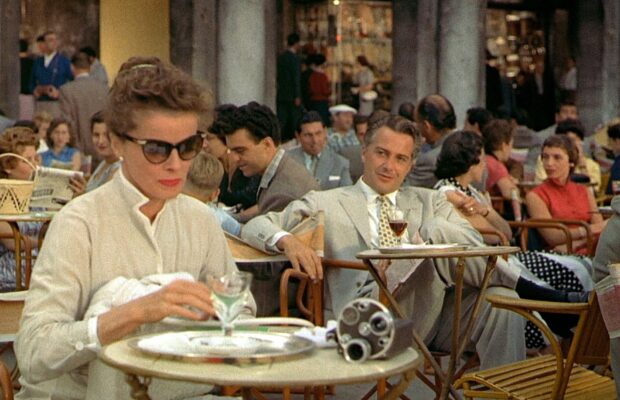
Toronto Film Society presented Summertime (1955) on Monday, August 23, 1982 in a double bill with King Kong as part of the Season 35 Summer Series, Programme 7.
Production Company: United Artists. Director: David Lean. Producer: Ilya Lopert. Screenplay: David Lean and H.E. Bates, based on the play “The Time of the Cuckoo,” by Arthur Laurents. Photography: Jack Hildyard. Music: Sandro Cicognini. Filmed in Venice in Eastman Color.
Cast: Katharine Hepburn (Jane Hudson), Rossano Brazzi (Renato Di Rossi), Isa Miranda (Signora Fiorini), Darren McGavin (Eddie Yaeger), Mari Aldon (Phy Yaeger), Jane Rose (Mrs. McIlhenny), MacDonald Parke (Mr. McIlhenny), Gaitano Audiero (Mauro), Andre Morell (Englishman), Jeremy Spenser (Vito Di Rossi), Virginia Simeon (Giovanna).
“The beautiful city of Venice, with its ancient buildings, its winding canals, its mingling of vivid sounds and colors and its bewitchingly romantic air comes off the principal performer in David Lean’s and Ilya Lopert’s “Summertime.” (The film opened last night at the Astor with a benefit showing for the American National Theatre and Academy “Salute to France.”) This is so, even though Katharine Hepburn and Rossano Brazzi are the picture’s human stars and its cast includes Isa Miranda and several others of quality and charm.
The explanation is simple. In adapting for the screen . . . Mr. Lean and H. E. Bates . . . reduced the complicated pondering of an American woman’s first go at love with a middle-aged merchant of Venice to pleasingly elemental terms. And they let the evident inspiration for their heroine’s emotional release be little more than the spell cast by the city upon her fitful and lonely state of mind.
The challenge thus set of making Venice the moving force in propelling the play has been met by Mr. Lean as the director with magnificent feeling and skill. Through the lens of his color camera, the wondrous city of spectacles and moods becomes a rich and exciting organism that fairly takes command of the screen. . . .
Miss Hepburn is clever and amusing as a spirited American old maid who turns up in Venice with her guide books and a romantic gleam in her eye. She makes a convincing summer tourist. And her breathlessly eager attitude is just right for the naïve encounters and farcical mishaps that have been arranged.
But a sense of her wistful frustration and her loneliness in this city where she has dreamed she will find “a wonderful mystical magical miracle” does not take hold upon the mind until Mr. Lean has skillfully wrapped her in the haunting beauty of the place. . . . Nor does the excitement of her meeting with a handsome Venetian come home until Mr. Lean has walked her with him through the shadows of the whispering arcades and let them reach for a fallen gardenia in the dark waters of a canal. It is Venice itself that gives the flavor and the emotional stimulation to this film.”
Bosley Crowther, New York Times, 22/6/55
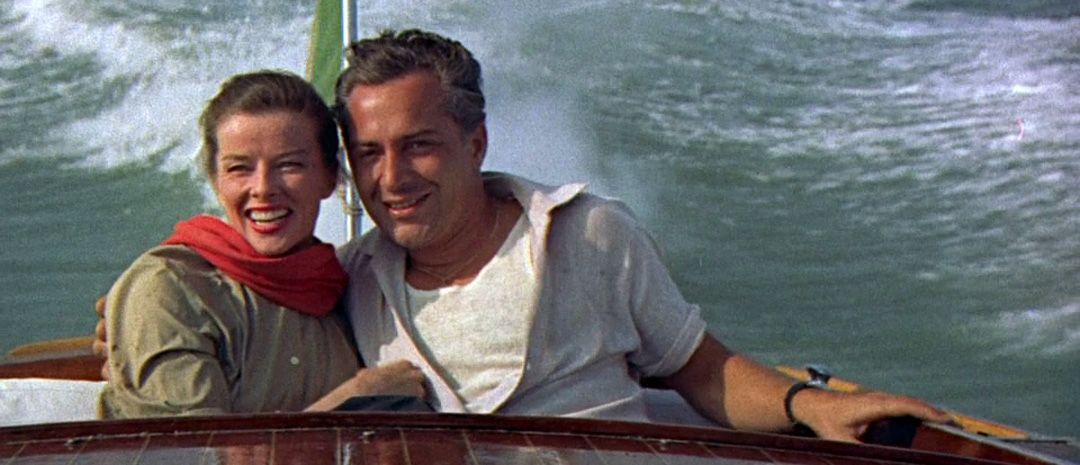
“. . . in the early sequences, both Lean and Hepburn cleverly, acutely convey the tourist’s isolation in a beautiful city–the diffident backchat with other guests at the pensione, the wandering around, the shop-gazing and time-killing, the moments of curiosity and panic. These are admirably observed–and the sense of place is often vividly real. By the device of making Jane an amateur movie photographer, the audience at times becomes the tourist’s eye, and the whole texture of impressions reflects an enthusiastic response to the magic of this extraordinary city. . . . This surface, the talent of Hepburn and a few crisply written moments preserved from the play, ensure that the film emerges as Lean’s most interesting for some time. Yet it remains disturbingly lacking in genuine style. Committed, after all, by its subject to make a comment on human relations, it declines at each essential point to do so.”
Gavin Lambert, Sight and Sound, Autumn, 1955
Notes complied by Nancy Young

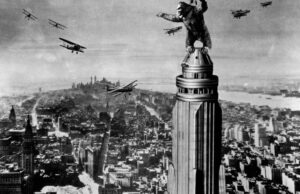
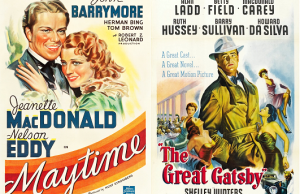
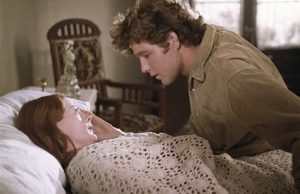






Leave a Reply